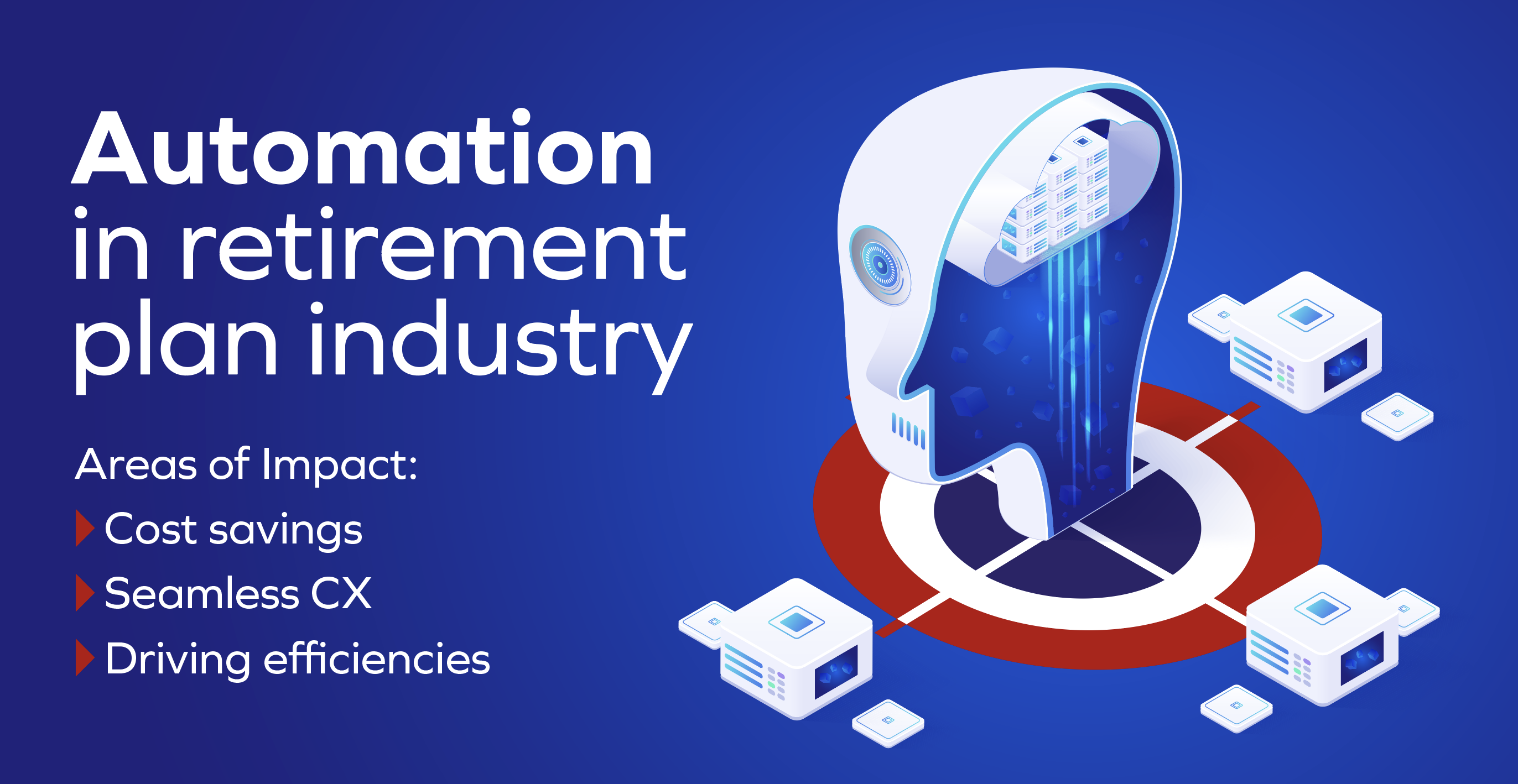
“What is the top technology challenge facing your company today?” — we asked our webinar participants. An overwhelming number of them said “automation”. Process automation, data-related automation, testing automation etc. too. This seems like a natural response to the pressures of today.
To discuss this, we brought together experts from across the spectrum of retirement planning: Michelle Steele, VP of Customer Experience at OneAmerica; Jamie McInnes, President and CEO of Oculus Partners; Anu Mandava, Head of Architecture at CUNA Mutual Group’ and Chandrasekaran Vaidyanathan (VC), co-founder and head of strategy at Congruent. Here are their observations about automation.
The retirement plan industry is known to be a slow adopter of technology in general. With COVID-19 adding to the pressures, as Jamie McInnes of Oculus Partners observes, there is perhaps a renewed urgency among service providers to embrace technology. “Some players are selling their businesses, others are altering their entire operating model by partnering with large firms with technology and BPO capabilities — maybe because they’re feeling it’s not happening fast enough,” he says. Michelle of AmericaOne agrees, “there has been a lot more digital transformation in the last year simply for self-preservation.” A key part of this is automation.
The three primary areas of impact for automation are: Cost savings, customer experience (CX) and operational efficiency.
Automation for cost savings
“All providers are recognizing that to offer their services in the cost structures they have, and overcome the market pressures, they need automation at a greater degree,” explains Jamie. The process-heavy retirement plan industry is seeing fee compression for plan sponsors. With legacy systems, retirement service providers will hardly be able to make bare minimum profit margins.
Application modernization and automation can help plan sponsors accelerate processes, reduce turnaround time and improve ROI. “Automation is a way to streamline a lot of work to reduce the cost per participant or costs back to the plan sponsors,” says Michelle of OneAmerica about their successes with RPA.
Delivering seamless CX with automation
“A trend I see is that even after self-service has been made available, adoption has been poor,” says VC of Congruent. This is because a lot of processing continues to be done manually at the service provider’s end. Therefore, self-service really is just an alternate way to raise a request and wait.
This area presents myriad opportunities — “to build experiences that are compelling enough for the participant to do it themselves,” he adds. From simple bots to smart assistants, automation and artificial intelligence can improve user experience in smoother onboarding, automated payroll processing, auto-enrollment, auto-investments, personalized solutions, recommendations, withdrawals, etc.
Driving efficiencies through automation
Even for sponsors, onboarding and managing retirement plan for their participants leave a lot to be desired, an area ripe for automation. As Anu of CUNA Mutual points out, automation can play a significant role in maximizing the efficiencies of data management, cybersecurity and customer experience at scale. “I see that as an interesting thread across problems,” he adds.
Some of the top use cases for automation to drive efficiencies are:
- Automating repetitive tasks, freeing up the time of plan administrators
- Enabling automatic suggestions for plan sponsors to optimize investment options based on performance
- Monitoring for cybersecurity breaches
- Setting up alerts and reminders for compliance deadlines
- Building automated dashboards for each user across the retirement plan value chain
The biggest value of automation, however, is scale. For instance, service providers can offer hyper-personalized recommendations for every single participant, whenever they want, without having to make disproportionate investments — a bot could do it. There is a lot more that bots could do.
